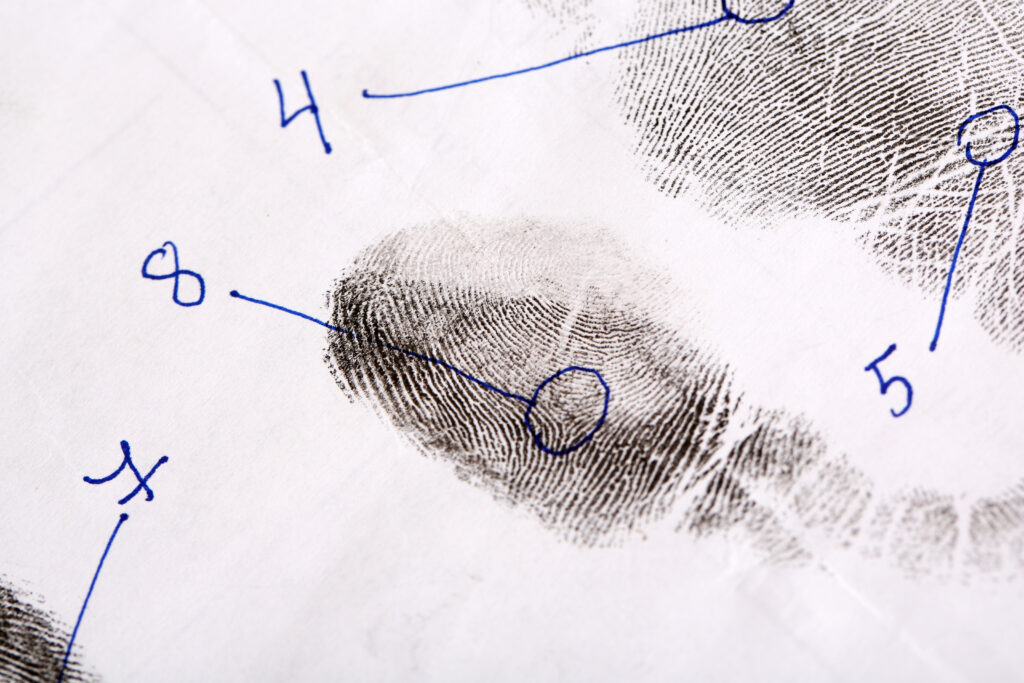Bigfoot, also known as Sasquatch, is a mythical creature said to inhabit the forests of North America.
It is typically described as a large, ape-like creature with shaggy hair and a height of up to nine feet.
The belief in Bigfoot dates back centuries and has roots in indigenous folklore and mythology.
There have been numerous reported sightings of Bigfoot over the years, but the evidence for its existence is highly controversial.
Some people believe that Bigfoot is a relict hominid, a surviving member of an extinct species of ape-like human ancestors. Others view it as a figment of the imagination or a hoax.
Despite the lack of concrete evidence, belief in Bigfoot persists.
It has gained a significant following and has become a cultural phenomenon.
There are organizations dedicated to studying and searching for the creature, and numerous books, documentaries, and movies have been made about it.
While some people may find the belief in Bigfoot to be harmless or even entertaining, it’s important to remember that the science is not settled.
Historical and cultural contexts
Belief in Bigfoot as part of indigenous folklore and mythology
Belief in Bigfoot, also known as Sasquatch, has roots in the folklore and mythology of indigenous cultures in North America.
The creature has been part of these traditions for centuries, and various names and stories about it have been passed down through the generations.
In many indigenous cultures, Bigfoot is seen as a spiritual being or a messenger from the spirit world.
It is often depicted as a powerful and mysterious creature that is connected to the natural world and the forces of nature.
In some traditions, Bigfoot is revered as a protector of the land and its inhabitants, while in others it is feared as a dangerous and malevolent entity.
The belief in Bigfoot as a spiritual being is closely tied to the indigenous worldview, which sees the natural world as infused with spirit and meaning.
It is not uncommon for indigenous cultures to have stories about powerful and mysterious creatures that inhabit the land and play a role in the spiritual lives of the people.
Despite the deep cultural and spiritual significance of Bigfoot in indigenous folklore and mythology, the existence of the creature as a physical being has not been scientifically agreed upon.
Regardless of its origins, the belief in Bigfoot remains an important part of the cultural traditions and worldview of many indigenous peoples.
Modern interest in Bigfoot as a cultural phenomenon
In recent years interest in Bigfoot has grown beyond indigenous roots and has become a widespread cultural phenomenon.
There are several reasons for the modern interest in Bigfoot.
One is the enduring mystery and fascination with the unknown.
The idea of a large, undiscovered creature living in the forests of North America captures the imagination and fuels a desire to uncover the truth.
Another factor is the proliferation of media coverage and popular culture references to Bigfoot.
The creature has been featured in numerous books, movies, TV shows, and documentaries, and has gained a significant following online.
This has helped to keep the legend of Bigfoot alive and has contributed to its cultural significance.
There are also organizations dedicated to studying and searching for Bigfoot, and events and conferences that focus on the creature.
These provide a forum for people to share their experiences and theories about Bigfoot, and help to foster a sense of community among believers.
Psychological factors

Need for control and understanding of the unknown
Human beings have a natural desire for control and understanding.
We like to have a sense of order and predictability in our lives, and we often seek to explain and make sense of the things that happen around us.
This is especially true when it comes to the unknown and the mysterious.
One way that people try to gain control and understanding of the unknown is by developing theories and explanations for unexplained phenomena.
While it is natural to want to understand and make sense of the world around us, it is important to approach claims of the unknown with skepticism and to seek out reliable sources of information.
This helps us to avoid falling prey to misinformation and to make decisions based on facts rather than speculation.
Influence of group dynamics and social influence
The influence of group dynamics and social influence on belief in Bigfoot and other unexplained phenomena is significant.
When we are part of a group, we are often influenced by the beliefs and opinions of others, especially if those beliefs are shared by a large number of people.
For example, if a group of people all believe in Bigfoot and discuss their belief in the creature, it is likely that this belief will be reinforced and strengthened within the group.
This is because people are more likely to accept and adopt the beliefs of others when they are part of a group, especially if those beliefs align with their own.
Group dynamics and social influence can also lead to a phenomenon known as groupthink, in which members of a group are more likely to accept a belief or opinion without fully evaluating the evidence.
This can lead to a lack of critical thinking and a tendency to blindly accept the views of the group, even if those views are not supported by facts.
In the case of belief or disbelief in Bigfoot, group dynamics and social influence may contribute to the persistence of each side.
It is important to be aware of these influences and to approach claims with an open mind and a willingness to critically evaluate the evidence.
Role of confirmation bias and pattern-seeking behavior
Confirmation bias and pattern-seeking behavior can also play a role in belief in Bigfoot and other unexplained phenomena.
Confirmation bias is the tendency to favor information that confirms our existing beliefs and to overlook or dismiss information that contradicts those beliefs.
This can lead us to seek out evidence that supports our beliefs and to interpret ambiguous or neutral information in a way that confirms those beliefs.
Pattern-seeking behavior is the tendency to see patterns and connections where they may not exist.
This can lead us to attribute meaning and significance to random events or phenomena, even when there is no logical basis for doing so.
Together, confirmation bias and pattern-seeking behavior can contribute to the persistence of belief in unexplained phenomena.
It is important to be aware of these biases and to critically evaluate the evidence when forming beliefs about the world around us.
This helps us to avoid falling prey to misinformation and to make informed decisions based on facts rather than speculation.
Evidence for Bigfoot’s existence

Examination of alleged sightings and physical evidence
The examination of alleged sightings and physical evidence is an important part of evaluating the existence of Bigfoot and other unexplained phenomena.
While there have been numerous reported sightings of Bigfoot over the years, the evidence for its existence is largely anecdotal and lacks scientific consensus.
One type of evidence that has been cited as evidence for Bigfoot is alleged physical evidence, such as footprints, hair samples, and other bodily remains.
However, these types of evidence are often difficult to authenticate and have been subject to hoaxes and misidentification.
In addition, the lack of clear and consistent physical evidence makes it difficult to establish the existence of Bigfoot as a physical being.
Another type of evidence that has been cited in support of Bigfoot is eyewitness accounts of sightings.
While these accounts can be compelling, they are often subjective and can be influenced by a variety of factors, including the observer’s expectations, perceptions, and motivations.
Overall, the examination of alleged sightings and physical evidence does not provide conclusive evidence for the existence of Bigfoot. It can go either way.
While it is possible that Bigfoot could be based on real animals or natural phenomena that have been misidentified or exaggerated in the telling of these stories, it is also possible that it is purely a product of the imagination.
Time will tell!
Evaluation of the credibility of this evidence
When evaluating the credibility of alleged sightings and physical evidence as evidence for the existence of Bigfoot and other unexplained phenomena, it is important to consider a number of factors.
One factor to consider is the reliability of the sources of the evidence. Are the sources credible and reliable, or do they have a history of making exaggerated or false claims?
Another factor to consider is the quality of the evidence itself. Is the evidence clear, consistent, and verifiable, or is it ambiguous, contradictory, or prone to misinterpretation?
It is also important to consider the context in which the evidence was collected.
Were the conditions under which the evidence was collected conducive to accurate observation and recording, or were there potential biases or distractions that could have affected the reliability of the evidence?
Overall, the evaluation of the credibility of alleged sightings and physical evidence as evidence for the existence of Bigfoot and other unexplained phenomena requires a critical approach.
While it is possible that some of this evidence may be genuine, it is important to approach it with an open mind and to carefully consider all of the available evidence before forming a conclusion.
Conclusion
In conclusion, belief in Bigfoot and other unexplained phenomena is influenced by a variety of factors, including historical and cultural contexts, psychological factors, and the availability of evidence.
Belief in Bigfoot as a spiritual being is rooted in indigenous folklore and mythology, while modern interest in the creature is driven by a fascination with the unknown and the proliferation of media coverage and popular culture references.
Psychological factors such as the need for control and understanding of the unknown, the influence of group dynamics and social influence, and the role of confirmation bias and pattern-seeking behavior can also contribute to belief in Bigfoot.
Despite the lack of concrete evidence for the existence of Bigfoot as a physical being, belief in the creature persists.
While it is possible that Bigfoot could be based on real animals or natural phenomena that have been misidentified or exaggerated in the telling of these stories, it is also possible that it is purely a product of the imagination.
The importance of critical thinking and skepticism in evaluating claims of extraordinary phenomena cannot be overstated.
It is important to approach claims with an open mind and a willingness to consider all of the available evidence and to seek out reliable sources of information.
This helps us to avoid falling prey to misinformation and to make informed decisions based on facts rather than speculation.

